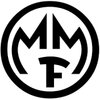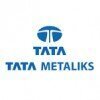Filter interviews by
MM Forgings Mechanical Engg. Design Interview Questions and Answers
MM Forgings Mechanical Engg. Design Interview Experiences
1 interview found
I applied via Company Website and was interviewed before Dec 2020. There were 4 interview rounds.
Interview Questionnaire
3 Questions
- Q1. First angle and third angle projection?
- Ans.
First angle and third angle projection are two methods of creating orthographic projections of a 3D object onto a 2D plane.
First angle projection is commonly used in Europe and Asia, while third angle projection is commonly used in North America.
In first angle projection, the object is placed in front of the viewing plane and the views are created by projecting lines from the object onto the plane.
In third angle projec...
- Q2. What is forging?
- Ans.
Forging is a manufacturing process where metal is shaped by applying compressive force using a hammer or press.
Forging is used to create parts with high strength and durability.
It involves heating the metal to a specific temperature and then shaping it using a hammer or press.
There are different types of forging, including open-die forging, closed-die forging, and seamless rolled ring forging.
Examples of forged parts i...
- Q3. Steel types?
Interview Preparation Tips
Top trending discussions






Interview questions from similar companies

I applied via Referral and was interviewed before Jan 2021. There were 2 interview rounds.
(2 Questions)
- Q1. Practical test on Design software like autocad
- Q2. Complete Experiance on autocad commands
- Ans.
I have extensive experience with AutoCAD commands.
Proficient in basic commands such as line, circle, rectangle, etc.
Experienced in advanced commands such as array, mirror, offset, etc.
Familiar with 3D modeling commands such as extrude, revolve, sweep, etc.
Adept at using AutoCAD's annotation commands such as text, dimension, leader, etc.
Skilled in using AutoCAD's modification commands such as trim, extend, fillet, etc.

Interview Preparation Tips

I applied via Walk-in and was interviewed in Jul 2023. There were 4 interview rounds.

TCS based questions
Good knowledge of the communicate
(1 Question)
- Q1. Engineering design

I applied via Recruitment Consultant and was interviewed in Mar 2021. There was 1 interview round.
Interview Questionnaire
1 Question
- Q1. How's company in technical environment?
Interview Preparation Tips

I applied via Referral and was interviewed before Feb 2022. There were 3 interview rounds.

General questions from graduation subjects & questions from Quantitative aptitude. Overall paper difficulty was at medium level.
(6 Questions)
- Q1. Introduce yourself. Different types of measuring instruments & their applications, least count.
- Q2. Project details done in graduation last semester.
- Q3. Applications of measuring instruments.
- Ans.
Measuring instruments are used in various applications to accurately measure physical quantities.
Quality control in manufacturing processes
Monitoring and controlling environmental conditions
Testing and calibration of equipment
Research and development
Process optimization and efficiency improvement
Data collection and analysis
Safety and hazard detection
Medical diagnostics and patient monitoring
- Q4. Different types of castings & their uses.
- Ans.
Different types of castings & their uses
Sand casting: used for large and complex shapes like engine blocks
Investment casting: used for intricate and detailed parts like jewelry
Die casting: used for high-volume production of small to medium-sized parts like car components
Centrifugal casting: used for cylindrical shapes like pipes and tubes
Continuous casting: used for producing long and continuous shapes like steel bille
- Q5. Manufacturing processes & their applications.
- Ans.
Manufacturing processes are techniques used to transform raw materials into finished products.
Casting: pouring molten metal into a mold to create a solid object (e.g. automotive engine blocks)
Machining: removing material from a workpiece using cutting tools (e.g. CNC milling)
Forming: shaping materials through deformation (e.g. sheet metal bending)
Joining: combining multiple parts into a single entity (e.g. welding)
Addi...
- Q6. Difference between first and third angle projection in mechanical drawings.
- Ans.
First angle projection and third angle projection are two different methods used in mechanical drawings to represent a 3D object on a 2D plane.
First angle projection is commonly used in Europe and Asia, while third angle projection is commonly used in North America.
In first angle projection, the object is placed in the first quadrant and the views are projected onto the planes surrounding the object.
In third angle proj...
Interview Preparation Tips
- Manufacturing processes

Production Engineer Interview Questions & Answers
APL Apollo Tubesposted on 4 Jun 2024
(2 Questions)
- Q1. Introduce your self
- Q2. What is the use of accumulator in tube mill
- Ans.
Accumulator in tube mill is used to store and regulate the flow of strip during continuous production.
Accumulator helps in maintaining a constant speed of the tube mill by storing excess strip during high-speed operation and releasing it during low-speed operation.
It also helps in reducing the number of welds required in the production process by allowing continuous feeding of strip into the mill.
Accumulators can be of...

Production Engineer Interview Questions & Answers
Steel Authority Of Indiaposted on 4 Jul 2023
I applied via Company Website and was interviewed in Nov 2022. There were 2 interview rounds.

(5 Questions)
- Q1. Shaft daimeter 40 mm wy bearings no
- Q2. Ferro silicon melting point wy
- Q3. Which composition is a ci casting
- Ans.
CI casting refers to cast iron casting, which is made from a composition of iron, carbon, and silicon.
CI casting stands for cast iron casting.
It is made from a composition of iron, carbon, and silicon.
The carbon content in CI casting is typically between 2.1% and 4%.
The silicon content in CI casting is typically between 1% and 3%.
CI casting is known for its excellent castability, good machinability, and high wear resis
- Q4. High crome metal pouring temperature
- Ans.
The pouring temperature of high chrome metal is typically between 1,600 to 1,800 degrees Celsius.
High chrome metal is commonly used in applications that require high temperature resistance and corrosion resistance.
The pouring temperature is crucial to ensure proper flow and solidification of the metal.
The specific pouring temperature may vary depending on the exact composition of the high chrome metal and the desired p...
- Q5. Maild steel campotion

I applied via Campus Placement and was interviewed before Apr 2022. There were 3 interview rounds.

(2 Questions)
- Q1. 1. Least count of different scales like vernier calliper, micrometer etc
- Ans.
The least count of vernier caliper is 0.02 mm and that of micrometer is 0.01 mm.
Least count of vernier caliper is 0.02 mm
Least count of micrometer is 0.01 mm
Least count is the smallest measurement that can be read on the scale
It is important to know the least count for accurate measurements
- Q2. What is metal? Types of metals and there chemical composition.
- Ans.
Metals are elements that have high electrical conductivity, luster, and malleability.
Metals are typically solid at room temperature, except for mercury which is a liquid.
Common types of metals include iron, copper, aluminum, gold, silver, and zinc.
Metals can be classified as ferrous or non-ferrous based on their iron content.
The chemical composition of metals varies depending on the specific element, but they all have ...
(1 Question)
- Q1. Family details, previous experience if any, if fresher than what were the scores of qualifications
Interview Preparation Tips
- Sheet Metal
- Metallurgy

(1 Question)
- Q1. Previous company working experience
- Ans.
Worked as a design engineer at XYZ Company for 3 years.
Designed and developed new products according to client specifications
Collaborated with cross-functional teams to ensure project success
Utilized CAD software for creating detailed designs
Participated in product testing and validation processes

I appeared for an interview in Sep 2024, where I was asked the following questions.
- Q1. What can you tell me about the materials used in your field?
- Ans.
Materials in design engineering vary widely, including metals, polymers, ceramics, and composites, each with unique properties and applications.
Metals: Steel and aluminum are commonly used for their strength and durability in structural applications.
Polymers: Plastics like ABS and nylon are favored for their lightweight and corrosion-resistant properties.
Ceramics: Used in applications requiring high heat resistance, su...
- Q2. Are you knowledgeable about machine design?
- Ans.
Yes, I have a solid understanding of machine design principles and applications across various industries.
Familiar with design principles like stress analysis and fatigue.
Experience with CAD software such as SolidWorks and AutoCAD.
Knowledge of materials selection for different applications, e.g., using titanium for lightweight structures.
Understanding of mechanisms, such as gears and linkages, for motion transfer.
Exper...
- Q3. About CAD design
- Q4. Asked calculations
Interview Preparation Tips
MM Forgings Interview FAQs
Tell us how to improve this page.
MM Forgings Interviews By Designations
- MM Forgings Production Engineer Interview Questions
- MM Forgings Design Engineer Interview Questions
- MM Forgings Deputy Engineer Interview Questions
- MM Forgings Logistics Executive Interview Questions
- MM Forgings Quality Engineer Interview Questions
- MM Forgings Proprietor Interview Questions
- MM Forgings Mechanical Engineer Interview Questions
- MM Forgings Buyer Interview Questions
- Show more
Interview Questions for Popular Designations
- Mechanical Engineer Interview Questions
- Mechanical Designer Interview Questions
- Draughtsman Mechanical Interview Questions
- Senior Mechanical Design Engineer Interview Questions
- Lead Mechanical Engineer Interview Questions
- Mechanical Maintenance Engineer Interview Questions
- Diploma Mechanical Engineer Interview Questions
- Mechanical Technician Interview Questions
- Show more
Interview Questions from Similar Companies
|
Design Engineer
53
salaries
| ₹1.5 L/yr - ₹5.2 L/yr |
|
Engineer
31
salaries
| ₹2.2 L/yr - ₹5.4 L/yr |
|
Assistant Engineer
31
salaries
| ₹2 L/yr - ₹4.1 L/yr |
|
Quality Engineer
30
salaries
| ₹1.4 L/yr - ₹4 L/yr |
|
Junior Engineer
28
salaries
| ₹2 L/yr - ₹4 L/yr |

Tata Steel

JSW Steel

Jindal Stainless

Jindal Saw
- Home >
- Interviews >
- MM Forgings Interview Questions >
- MM Forgings Mechanical Engg. Design Interview Questions











